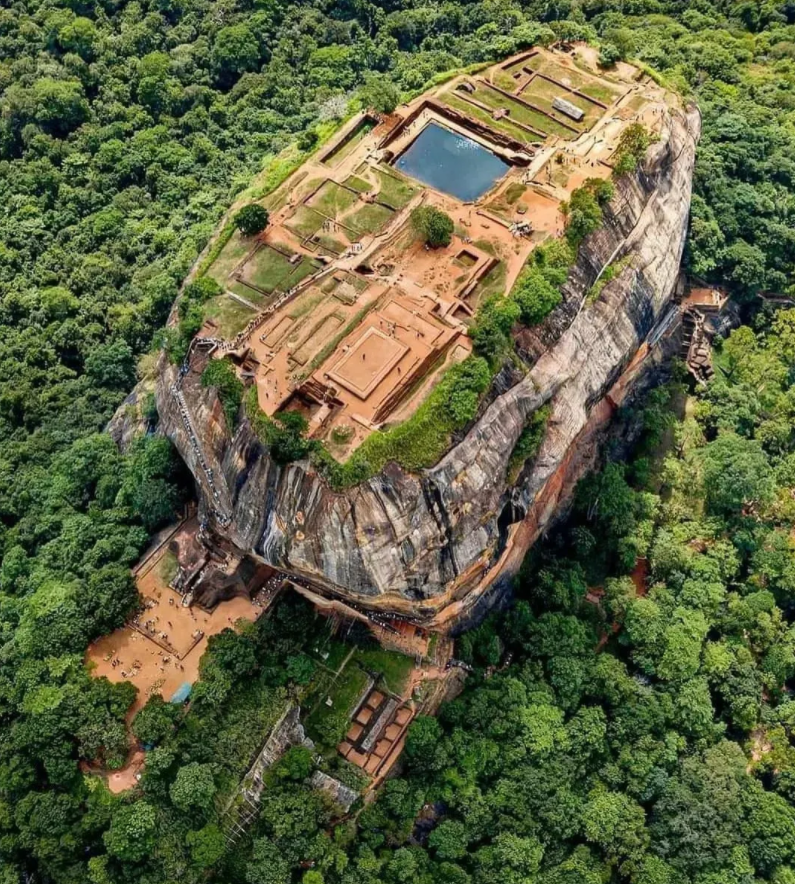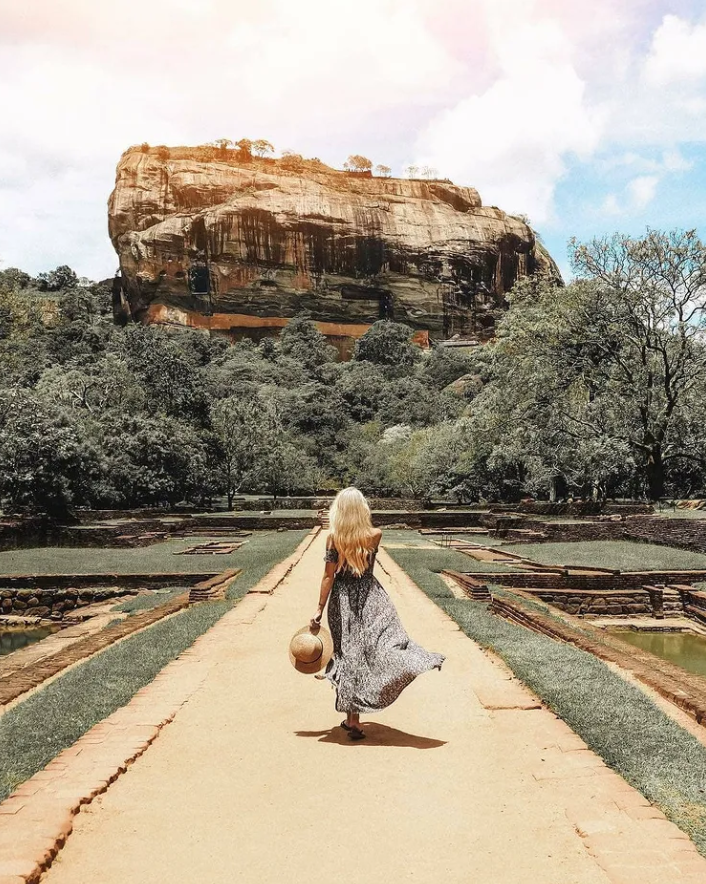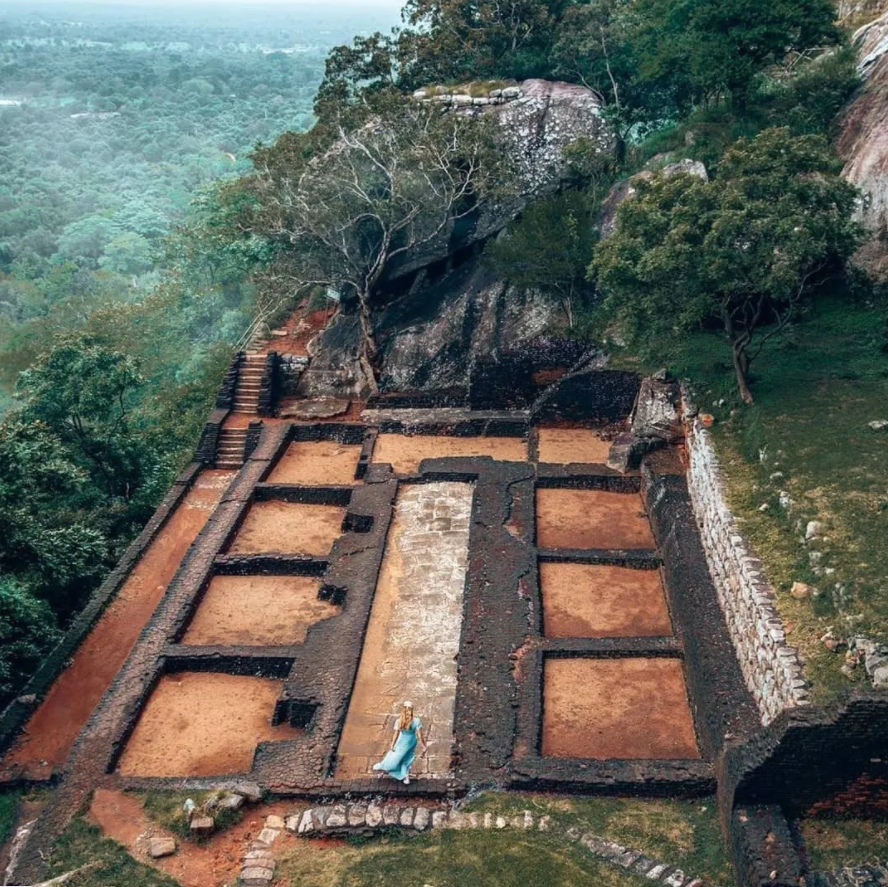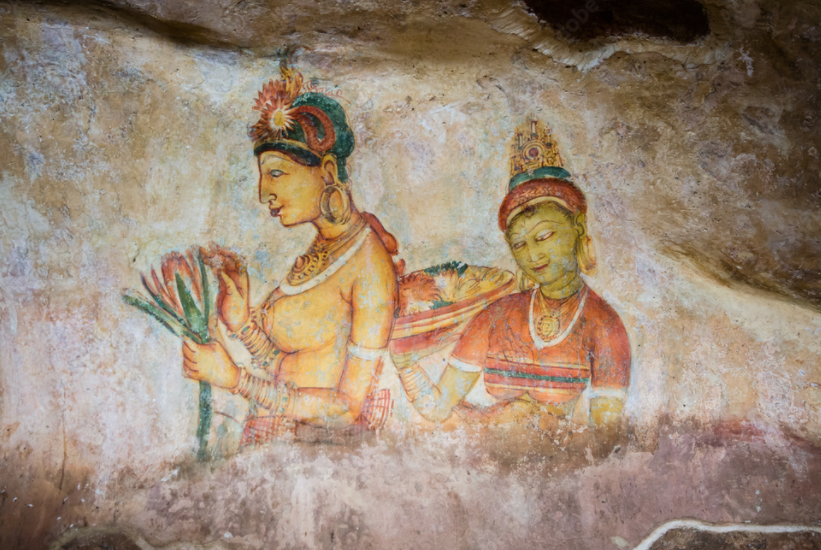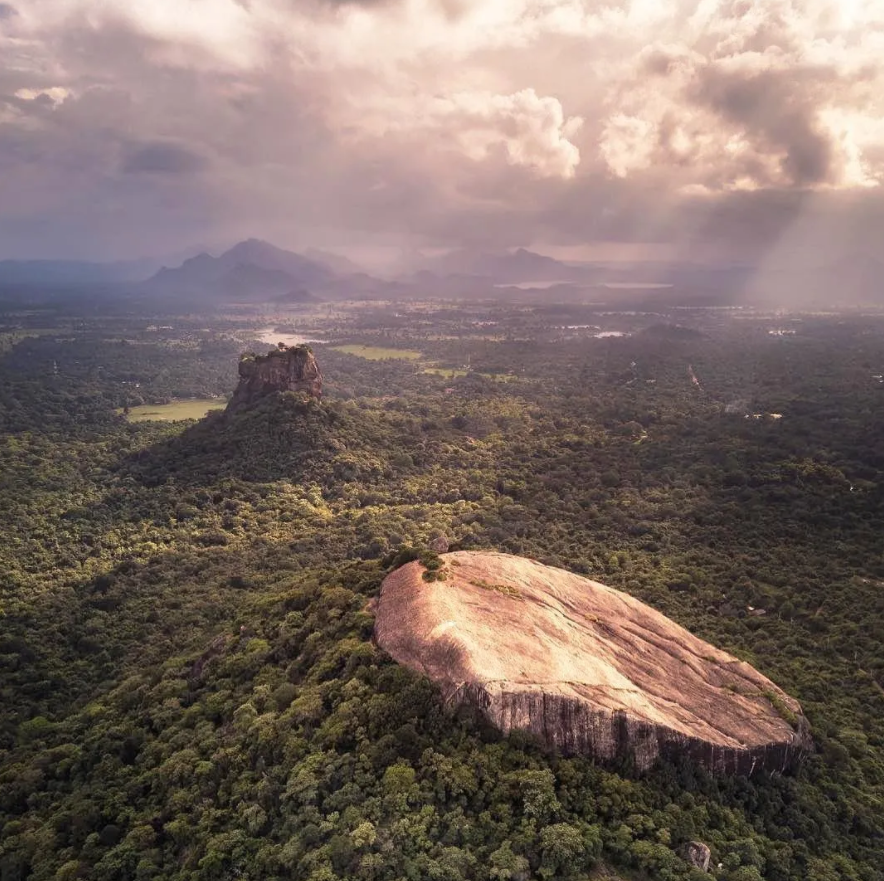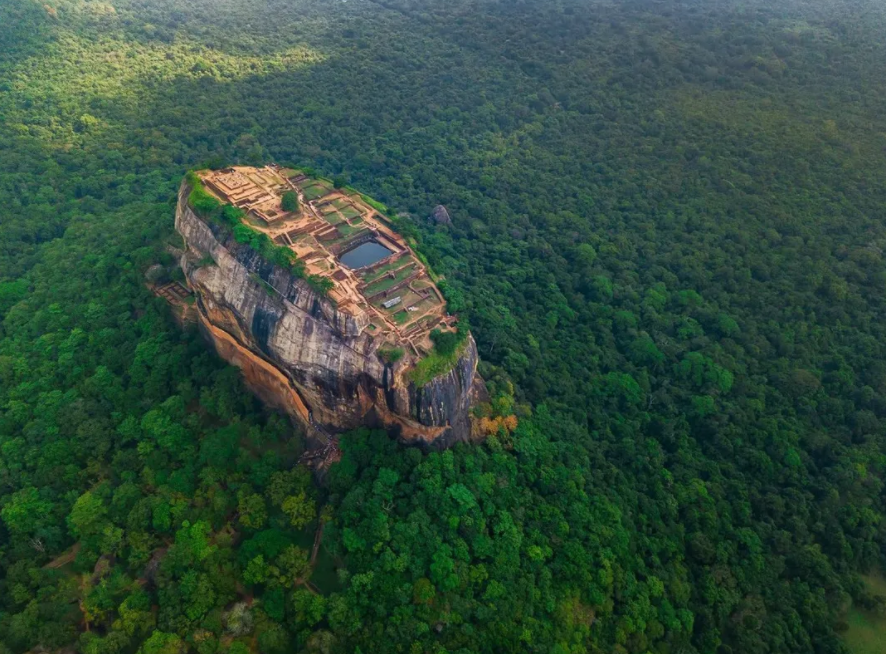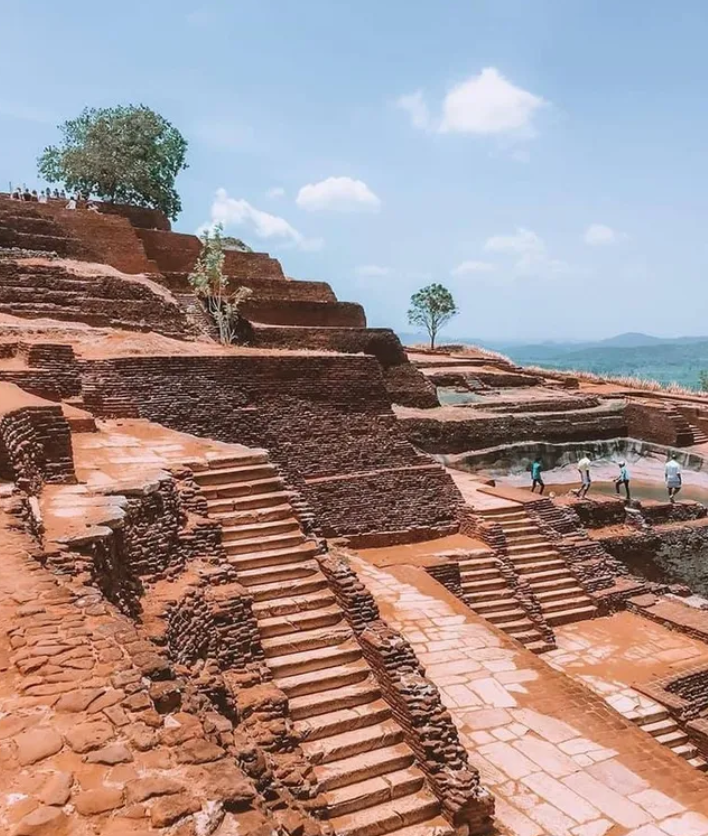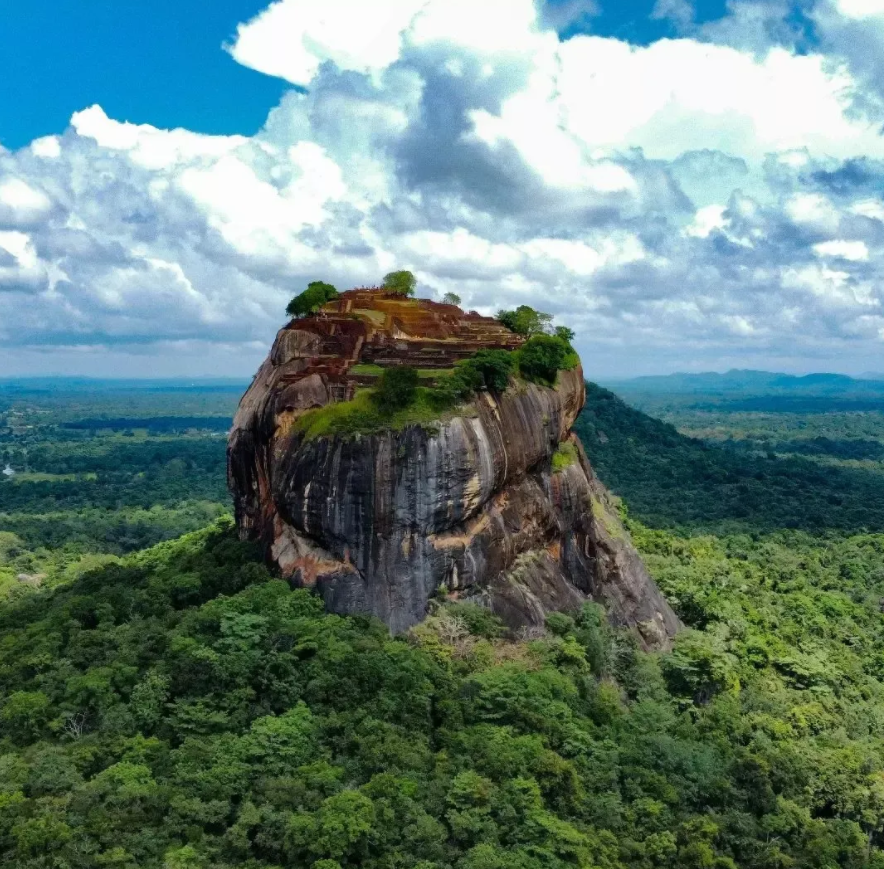The Sigiriya fortress is one of the most visited sites in Sri Lanka and it’s no surprise why! It is also one of the most valuable historic monuments in the Island and the hike is definitely worth the view at its peak. Things to see in Sigiriya are innumerous; the climb, the view and everything in-between makes for the perfect Sri Lankan experience.
Here are ten facts about Sigiriya, that you probably didn’t know before;
Credit – Mykola Sirkiziuk
1. The Beginning Story
Sigiriya, is a site in central Sri Lanka consisting of the ruins of an ancient stronghold that was built in the late 5th century CE on a remarkable monolithic rock pillar. The rock rises to an elevation of 1,144 feet (349 metres) above sea level and is around 600 feet (180 metres) above the surrounding plain. The Sinhalese King Kashyapa I, who reigned from 477 to 495 is said to have built this monumental piece of work.
2. A Rock Full of Controversy
Credit – Jana Marie
King Kasyapa’s life and rule was full of controversy. Sigiriya history dictates that King Kashyapa was born to a non-royal concubine and had no right to the throne. Consequently he rebelled against his king father Dhatusena, imprisoning him and eventually having him killed and entombing him in a wall. Thereafter, King Kashyapa chose the Sigiriya fortress as his royal residence as he was worried of potential attacks from his brother Moggallana, the rightful heir to the throne. From atop of Sigiriya he had unobstructed views of the surrounding area.
3. Before and After
It is also widely believed that before King Kashyapa used Sigiriya as his residence, the rock was a Buddhist monastery. It was once again used as a monastery after Kashyapa’s death till it was abandoned in the 14th century.
4. The Enigmatic Mirror Wall
Credit – Adobe
King Kashyapa created a ‘mirror wall’ so highly polished that he could see his reflection as he walked by. There is also evidence of a wall, 140 metres long and 40 metres high, covered with paintings of ladies, more famously known as the “Sigiriya Frescoes”. These paintings are still partly visible today.
5. The Hike Up
Credit – Sebastian Holmer
The only way to access the wonders of the Sigiriya fortress is to take the stairs. The rock is 200 metres high and visitors can walk the 1,200 steps, divided amongst a number of staircases, to the top.
6.The Advanced Hydraulic System
Sigiriya is known for the impressively advanced hydraulic system that has been in place since the olden days. This impressive system consists of canals, lakes, dams, bridges, and water pumps which still provide water to the site’s gardens to this day! Evidently, this contributes largely to Sigiriya’s reputation as one of the world’s best-preserved examples of urban planning. Some of the garden water comes from the top of Sigiriya. The pools at the top of the rock are filled with rainwater, and a series of drains cut into the rock connect to a large cistern, which feeds into the underground conduit system to help supply the gardens with water.
7. The Lion Rock
King Kashyapa built a façade on the plateau halfway up in the form of a huge lion with a staircase emerging out of its mouth. This is why the place is also called ‘Lion Rock’. The remnants of this lion can be observed to date.
8.Impressive Archaeological Importance
Credit – Connie Felicity
This man-built city is known for its archaeological importance and historical value. The city includes water gardens, a moat, terraced gardens and other archaeological features. It is a must see on your visit to Sri Lanka. Archaeologists explained that the site is a brilliant combination of deliberate symmetry and asymmetry playing on both natural and geometric forms.
9. Water Gardens of Sigiriya
The gardens at Sigiriya are known to be the best-preserved water gardens in South Asia and are considered to be some of the oldest landscaped gardens in the world. History states that many important guests in the 5th Century would have walked a path with the impressively designed water gardens on either side, serving as a grand entrance to the more than 1,200 steps leading up to the palace.
10. Highly Acclaimed
Credit – Shanul Photography
Sigiriya is widely considered to be the 8th wonder of the world. Moreover, it wasn’t until 1831 that the abandoned Sigiriya was discovered the site of Sigiriya became a UNESCO World Heritage Site in 1982.
You can make your visit to this not-to-be-missed site while you stay with us at Habarana Village by Cinnamon or Cinnamon Lodge Habarana.
Sigiriya is only a 20 minute drive away from our hotel and you can stay in comfort and reach your destination which is only 18km away! Enjoy the delicious food and plush lodging while we curate the perfect Sigiriya adventure for you!

